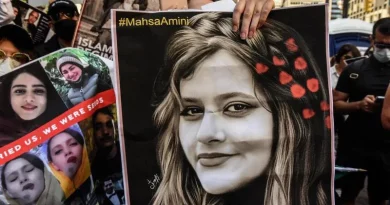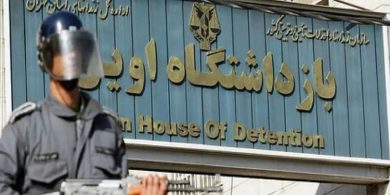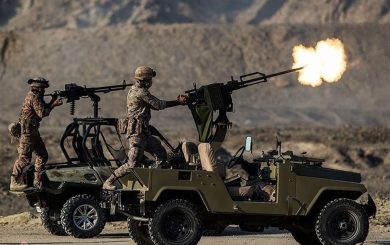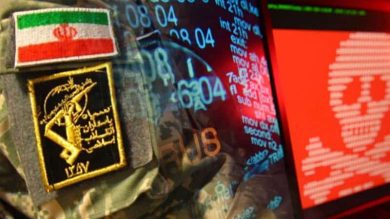The Islamic Revolutionary Guard Corps (IRGC) is often described as a military force, but that definition falls far short. In reality, the IRGC is a sprawling ideological and economic empire that has infiltrated every corner of Iranian life—from state institutions to civil society. Its reach extends not only through guns and prisons but through classrooms, mosques, newspapers, TV shows, and social media.
While tanks and torture chambers enforce the regime’s power overtly, the real conquest is quieter: indoctrination, surveillance, and control disguised as education, religion, and culture.
This article investigates how the IRGC embeds itself within Iran’s civil society—specifically in schools, mosques, and media—and how that network sustains authoritarianism, silences dissent, and shapes generations to accept repression as normal.
1. The IRGC’s Soft Power Strategy
Unlike conventional militaries, the IRGC sees ideological warfare as equally important as physical combat. The IRGC’s “soft war doctrine” focuses on winning the hearts and minds of Iranians, especially the youth, by controlling public discourse and promoting regime loyalty.
Key Objectives:
• Indoctrinate young people with revolutionary ideology
• Discredit reformist or democratic narratives
• Monitor potential dissent in schools, mosques, and media
• Build a loyal civilian base willing to act as informants or enforcers
This infiltration is not informal—it is organized, budgeted, and institutionalized through a dense web of IRGC-affiliated organizations.
2. Infiltrating Schools: Indoctrination Begins Early
Schools are one of the most critical battlegrounds for the IRGC’s ideological control. From primary education to universities, the IRGC embeds itself through curriculum design, student surveillance, and cultural programming.
A. Basij Student Units
The Student Basij, an arm of the IRGC-run paramilitary, operates in almost every school and university.
• Members monitor fellow students and teachers
• Organize religious ceremonies, “anti-imperialist” events, and political seminars
• Report any signs of secularism, feminism, or political dissent
Participation often brings academic or job advantages, turning ideology into a currency.
B. Curriculum Control
The IRGC works with the Ministry of Education to embed ideological content:
• Mandatory courses glorify martyrdom, the Islamic Revolution, and loyalty to the Supreme Leader
• Textbooks demonize the West, feminists, LGBTQ+ people, and ethnic minorities
• Censorship of literature, history, and social sciences is standard
Education becomes a tool not for critical thinking but for obedience training.
C. Surveillance and Suppression
Students and teachers face punishment for:
• Social media posts deemed “immoral” or “political”
• Unveiled dress on campus
• Attending protests or speaking out
IRGC-linked administrators coordinate with intelligence services to carry out interrogations, suspensions, or arrests.
3. Universities: Factories of Fear
Universities are supposed to be bastions of intellectual freedom. In Iran, they are among the most heavily monitored spaces—especially since student protests are often the regime’s first target.
A. Faculty Recruitment
Professors are vetted for political loyalty. Those with reformist or secular leanings are denied tenure or forced into retirement.
B. Ideological Courses
All students must take courses like:
• Islamic Thought
• History of the Revolution
• Political Thought of Imam Khomeini
These courses promote loyalty to the Islamic Republic and vilify democratic governance.
C. Crackdowns on Dissent
• Students involved in protests are arrested, expelled, or banned from further education
• Security officers from the IRGC’s intelligence division often pose as students or administrators
• Female students are especially targeted for dress code violations and activism
4. Mosques and Religious Centers: The IRGC’s Ideological Heartland
The IRGC controls or heavily influences tens of thousands of mosques and seminaries across Iran. These religious spaces are not only for worship—they are political indoctrination hubs.
A. Friday Prayers: Political Theater
Friday sermons are often written or approved by regime clerics loyal to the IRGC.
• Promote regime policies
• Justify foreign military actions (e.g., in Syria or against Israel)
• Attack internal enemies, such as women’s rights activists or ethnic minorities
These events also serve as recruitment sites for Basij and Quds Force affiliates.
B. Imam Khomeini Cultural Centers
These centers operate across cities and villages and are directly linked to the IRGC’s soft power strategy.
They:
• Host Quran classes, youth camps, and cultural festivals
• Monitor participants for dissent
• Offer incentives for loyalty (scholarships, job offers, travel opportunities)
These spaces become incubators for ideological enforcers.
C. Exporting Influence
The IRGC also funds mosques abroad—particularly in Lebanon, Iraq, Syria, Yemen, and parts of Europe. These centers often:
• Promote sectarian ideology
• Act as intelligence outposts
• Recruit fighters for IRGC proxy militias
5. Media and Cultural Production: Propaganda as Culture
The IRGC understands the power of media. It owns, sponsors, or influences a vast network of news outlets, production companies, publishing houses, and social media trolls.
A. State Media and News
Outlets like Fars News Agency and Tasnim News are directly run by the IRGC.
• Spread pro-regime narratives
• Attack critics and reformists
• Fabricate or distort information during protests or international crises
These outlets also conduct smear campaigns against exiled activists, journalists, and political prisoners.
B. Film, TV, and Music
The IRGC funds and censors cultural content.
• Films must pass ideological vetting
• TV shows glorify martyrdom, military sacrifice, and “Western decadence”
• Music by dissidents is banned; artists face arrest or exile
C. Cyber Armies and Troll Networks
The IRGC deploys thousands of operatives to:
• Discredit human rights organizations
• Impersonate dissidents to confuse public discourse
• Flood social media with hashtags, memes, and coordinated attacks
Their online presence is designed to shape perception, suppress truth, and manufacture loyalty.
6. The Role of the Basij: IRGC’s Civil Society Enforcers
The Basij Resistance Force is a paramilitary under the IRGC. But more than that, it is a civil society infiltrator—operating in:
• Schools
• Universities
• Neighborhoods
• Workplaces
• Factories
• Cultural centers
Basij members are trained to:
• Monitor their peers
• Enforce dress codes and ideological discipline
• Act as first responders during protests or unrest
They are the regime’s grassroots surveillance and enforcement arm—often recruited young and indoctrinated early.
7. Psychological and Social Impact
This systemic infiltration has profound effects:
A. Widespread Fear and Mistrust
• Families fear their children could be recruited or surveilled
• Teachers self-censor in classrooms
• Students avoid political conversations
B. Generational Trauma
• Youth grow up under constant monitoring
• Prison, exile, or torture becomes a looming threat for dissent
• Conformity is rewarded; critical thinking is punished
C. Erosion of Institutions
• Schools become propaganda factories
• Mosques lose spiritual legitimacy
• Media loses credibility
8. Exporting the Model: IRGC Abroad
The IRGC replicates this model in allied countries:
• Lebanon: Hezbollah runs schools and media mirroring Iran’s model
• Iraq: IRGC-backed militias control mosques and universities
• Syria: Religious centers double as military recruitment hubs
• Yemen: IRGC trains Houthis in ideological and military doctrine
This civil society colonization is a core part of Iran’s “Axis of Resistance” strategy.
9. Resistance Within Civil Society
Despite infiltration, brave Iranians continue to resist.
Examples:
• Teachers’ unions protesting indoctrination and low wages
• University students organizing underground study circles
• Clerics calling for separation of religion and state
• Journalists leaking IRGC influence campaigns
Civil society may be infiltrated—but it is not defeated.
10. What Can Be Done?
For Iranians:
• Build parallel institutions: independent study groups, encrypted communication, underground art
• Support whistleblowers and civil resistance
• Record and expose IRGC tactics anonymously when safe
For the International Community:
• Sanction IRGC front organizations in education, religion, and media
• Fund uncensored educational platforms and media for Iranians
• Recognize and protect civil society actors at risk
• Ban IRGC-affiliated clerics and cultural centers abroad
For Tech Companies:
• Remove IRGC-linked troll networks and propaganda accounts
• Boost access to secure communication tools
• Safeguard Iranian activists and journalists from digital harassment
Conclusion: Infiltration Is Power—But So Is Exposure
The IRGC has spent decades embedding itself into every layer of Iranian life. It has turned schools into training camps, mosques into political pulpits, and news into manipulation.
Join Our Newsletter!
Stay informed with the latest updates, news, and ways to take action in the fight for justice and global security. Sign up now to get updates delivered straight to your inbox!





